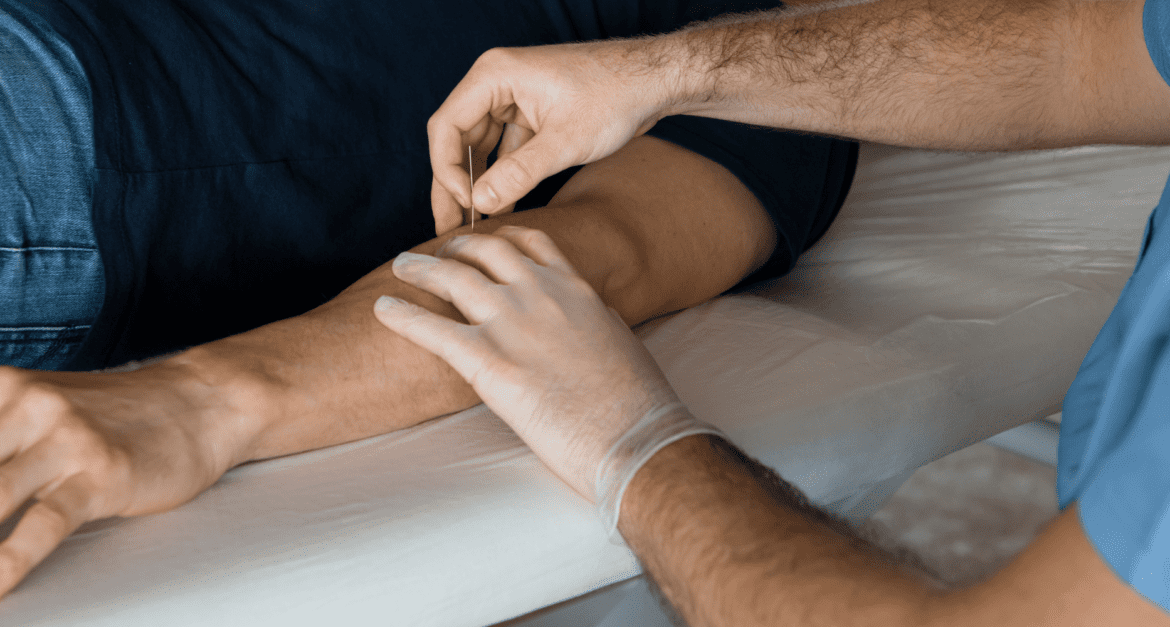Functional Dry Needling
Dry needling is a therapy involving the insertion of a fine filiform needle into soft tissues such as muscles, tendons, or ligaments for the purpose of reducing pain, decreasing muscle spasms/trigger points, and inflammation. Dry needling can also be used to activate or inhibit a muscle and enhance recovery. This procedure is comfortable for most patients and the risk of infection is minimal.
Much of the myofascial pain experienced by our patients results from trigger points. Trigger points are focal areas of muscle that are tight and hypersensitive. They can actively produce pain or will produce pain with movement, stretching, or contraction of the muscle. It is a common treatment for athletes but can also be utilized for your average person trying to live a pain-free life.
What is the difference between Dry Needling and Acupuncture?
Acupuncture is an ancient Eastern form of medicine from Asia. It uses a completely different set of diagnostic criteria to establish the appropriate treatment and has a completely separate set of diagnoses. Acupuncture is commonly used to treat a wide variety of systemic conditions from smoking addiction to gastric reflux.
Dry needling, on the other hand, is a Western form of medicine that uses the same needles as acupuncture. It is typically used to make a very local physiologic response in a tissue and uses the same diagnoses that you would hear from your primary care physician. While dry needling is different from acupuncture, they are both powerful, conservative treatment options for patients.
Frequently Asked Questions
We are in-network with Medicare Part B and the Veterans Community Care Program.
We will provide you with a super bill so you can take advantage of any out-of-network benefits your plan may offer, and your carrier will reimburse you directly.
A thorough medical health history will be taken which is followed by a physical exam. Your doctor will watch you perform various activities such as walking, stepping off a step, standing on one leg, reaching overhead, and others. You may be asked to perform a few simple exercises to see how your body stabilizes. The doctor will also extensively assess your joints and muscles to find which ones may need treatment. After discussing what was found on the examination, treatment options will be discussed. If no red flags are present, an initial treatment may be performed at the discretion of the doctor. There may be instances where imaging will be requested prior to beginning a trial of care. If we do not think we can help you or that you will benefit from another specialist, we will refer you to the appropriate provider.
The initial visit is approximately 40 minutes during which you can expect a detailed history, examination, and treatment. Subsequent visits vary in length from 20 to 60 minutes depending on your condition and specific needs.
No, we do not believe in long-term care plans or pre-pay plans. Our goal is to reduce your pain and get you back to your activity as fast as possible. Most patients experience significant relief or resolution in 8 visits or less. We are happy to help each patient reach their maximum potential but this is always at the patient's discretion.
X-rays may be recommended for some individuals. Referrals are made at the discretion of the clinician and are based on the specifics of the case. Imaging is typically performed following a trauma, for cases that are slow to respond to care, or if any red flags are present during the initial history and exam.
No, you do not have to have your back or neck “cracked”. Your provider will make a recommendation for the best care possible, which may or may not include a manipulation. Still, we will not perform any treatment that you are not comfortable with. We also offer several gentle and low-force alternatives to the standard manual manipulation that can make patients more comfortable and still retain the benefits.
The pop is known as cavitation and is caused by the release of gas. When a joint is gapped, dissolved gas in the synovial fluid forms a bubble and then collapses. This phenomenon is similar to opening the cap of a carbonated beverage and has recently been witnessed during MRI studies. The sound is not caused by bones being put back into place or aligned, this does not happen. Check out this video for more info.
Please wear comfortable clothing that allows you to move freely. Our treatments are frequently active for the patient and we want to maximize our time during each visit.

